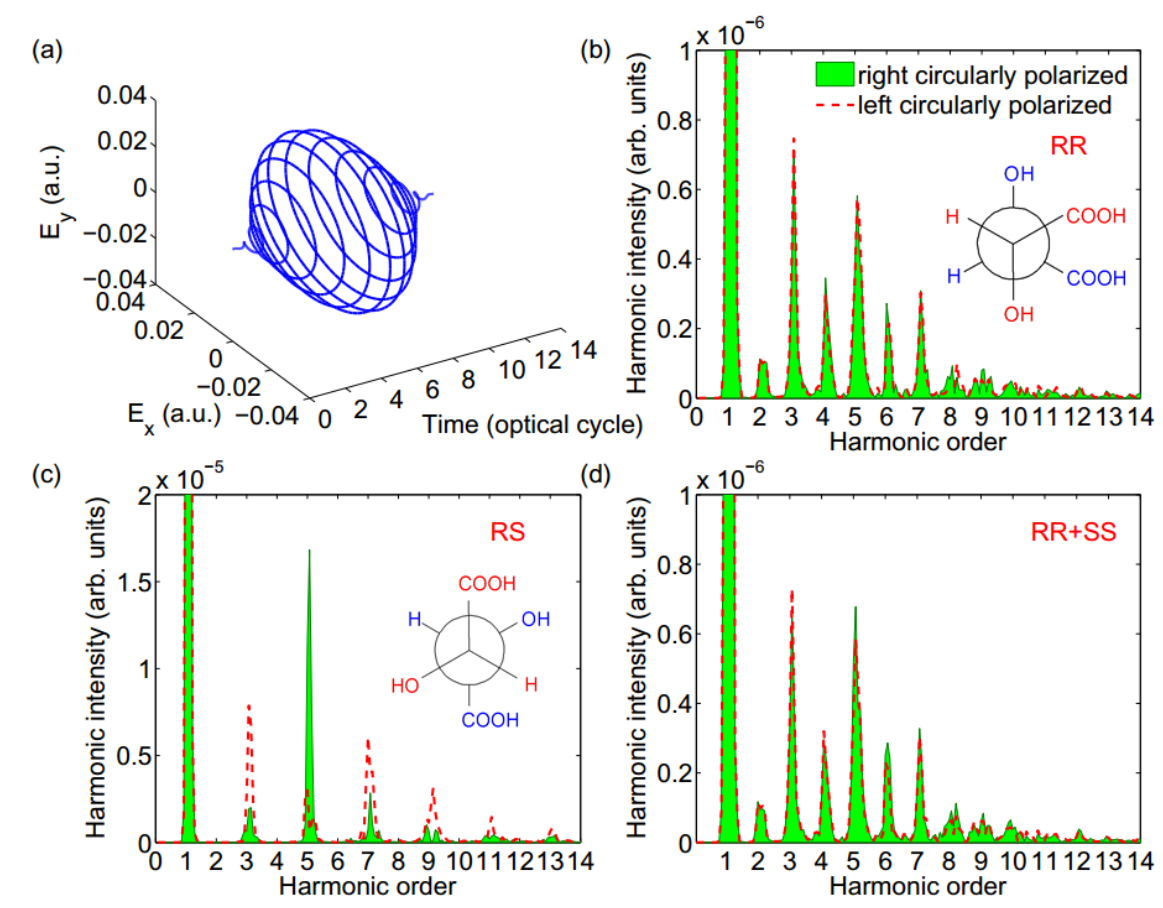A chiralmoleculeisa kind of moleculewhich is not superimposable on its mirror image. The property of chirality is of great practical importance because most biomolecules and pharmaceuticals are chiral and many chemical processes in living beings are chirality dependent. Therefore, detection and recognition of chirality is one of the most important and challenging tasks for researches and applications in the biological and pharmaceutical areas. If a molecule has more than one chiral centers, it can be either a chiral moleculeor an achiralmolecule.For example, if a molecule has two R-type chiral centers, it is a right-handed chiral molecule. However, if the moleculehas two enantiomeric chiral centers which are R-type and S-type respectively, it is an achiralmolecule known as a meso isomer.Generally, a chiral moleculepossessescirculardichroismin the optical response tocircularlypolarizedlight, while the optical responses are the same from a meso molecule. As a result,it is difficult todiscriminate the mesocompoundand racemicmixture (the mixture that has equalamounts of left- and right-handed enantiomers)with conventionaloptical methods.
The ultrafast laser team lead by Prof. Peixiang Luin WuhanNational Laboratory for Optoelectronics has studied high harmonic generation (HHG) from isomers ofmoleculewith two chiral centers, taking orientated tartaric acid asprototype, driven by intensecircularlypolarized femtosecond laser pulses. Anomalous circular dichroism inHHG is found. The obtained HHG spectra driven by left and right circularlypolarizedlaserpulsesfrom the chiral isomers are nearlyidentical, while the HHG spectra from the meso isomer aresignificantly different.Thiseffect is even more pronouncedwithbicircularlaserfields. Detailed analysis shows that this anomalous circular dichroismresults from the characteristichighlynon-perturbativerecollision process of HHG. This work proposes a method todiscriminatethe meso and racemic samples based on HHG.
This work “Anomalous circular dichroism in high harmonic generation of stereoisomers with two chiral centers”was supported by the National Natural Science Foundation of China under Grants No. 11404123, 11234004, 61275126,11422435,and11574101. The research result is published inOptics Express 24, 24824-24835 (2016).

(a) Electric field of the appliedcircularlypolarized laser pulse. (b) Comparison between the obtained HHG spectra driven by left and rightcircularlypolarized laser fields from the right-handed chiral isomer denoted as RR-tartaric acid. The inset is the Newman projection ofthe RR-tartaric acid. (c) Comparison between the obtained HHG spectra driven by left and rightcircularlypolarized laser fields from the meso isomer denoted as RS-tartaric acid. The inset is the Newman projection ofthe RS-tartaric acid. (d)Sum of theHHGspectra from RR- and SS-tartaric acids.